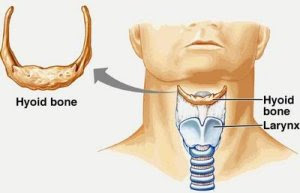
To be eligible for Public Service Loan Forgiveness, you need to work at least 30 hours a week at a local, state, or federal government agency or qualified nonprofit. You’ll have to resubmit this form each year and anytime you change jobs. To apply for Public Service Loan Forgiveness, you’ll fill out and submit the Employment Certification Form. You’ll be eligible after 120 consecutive payments.

The Public Service Loan Forgiveness (PSLF) program offers loan forgiveness to anyone who works full-time in a public service job. If you have qualifying federal student loans, you’re eligible for ICR. You’ll be eligible for student loan forgiveness after 25 years of consecutive payments. Instead, your monthly payment will be set at 20% of your discretionary income. ICR plans don’t require that you maintain a certain level of income. And you’ll need to let your student loan servicer know if you switch jobs or your income changes. To receive student loan forgiveness with IBR, you need to make consecutive payments for 20 to 25 years. You’re eligible if your IBR payments are lower than they would be on a standard 10-year repayment plan. You can always choose to opt out of the program, but if you do, you’ll lose the option for student loan forgiveness. So if your income goes up, your loan balance could end up being higher than it was before you went into the program. IBR will lower your monthly payments, but it won’t stop interest from accruing if your payments are too low. After 20 to 25 years of consecutive payments, you’ll be eligible for loan forgiveness. IBR plans cap your monthly payments at 10 to 15% of your discretionary income. For graduate borrowers, you’re eligible after 25 years. For undergraduate borrowers, your loans are forgiven after 20 years of consecutive payments. If you have qualifying federal student loans, you’re eligible for REPAYE. It also allows student loan borrowers to cap their monthly payments at 10% of their income.īut unlike PAYE, it doesn’t matter when the loan was taken out or if you’re going through any financial hardship. REPAYE is a revised version of PAYE put forth by President Obama.

You also must be able to prove you are going through “partial financial hardship.” This means your debt is substantially higher than your income. You need to have taken out your loans after October 1, 2007. To be eligible, your payments with PAYE must be lower than they would be on a standard 10-year repayment plan. With PAYE, your monthly payments are capped at 10% of your discretionary income.Īfter 20 years of consecutive payments, any remaining student loan balance is forgiven. PAYE is a federal student loan repayment program designed to help student loan borrowers who are having difficulty meeting their student loan payments. Check out the complete list of student loan repayment options below to see what is the best option for you. If you’re buried under a mountain of student loan debt, you could qualify for student loan forgiveness. But student loan forgiveness programs are a possibility for certain private loans as well.

No further payments are expected from you by the loan provider.Īs a general rule of thumb, most people who receive student loan forgiveness have federal Direct Loans. Student loan forgiveness is when the balance on your college debt is set to zero, regardless of how much you have left.

However, many people are eligible for student loan forgiveness programs and could get rid of this debt much sooner. The typical American takes 21 years to repay their student loan debt. And collectively, student loan borrowers in the U.S. The average college student graduates with $38,000 in student loan debt.


 0 kommentar(er)
0 kommentar(er)
